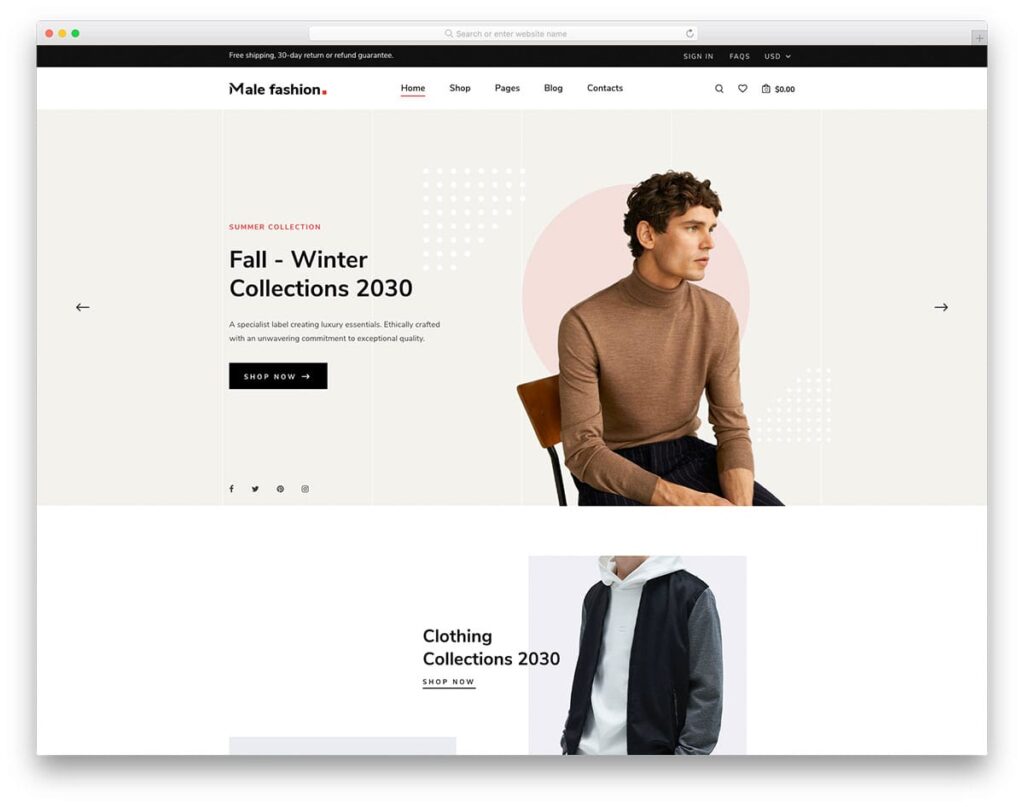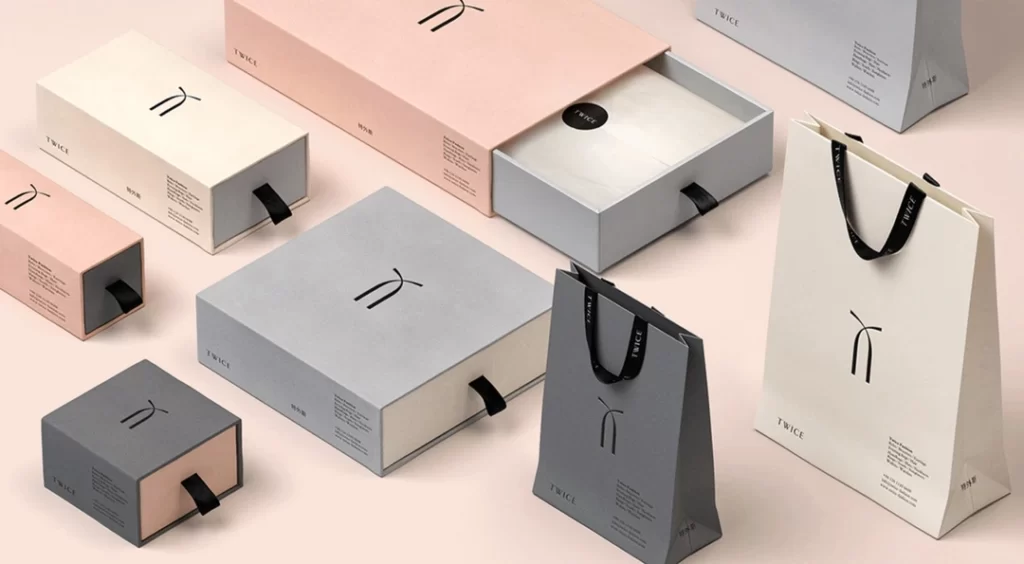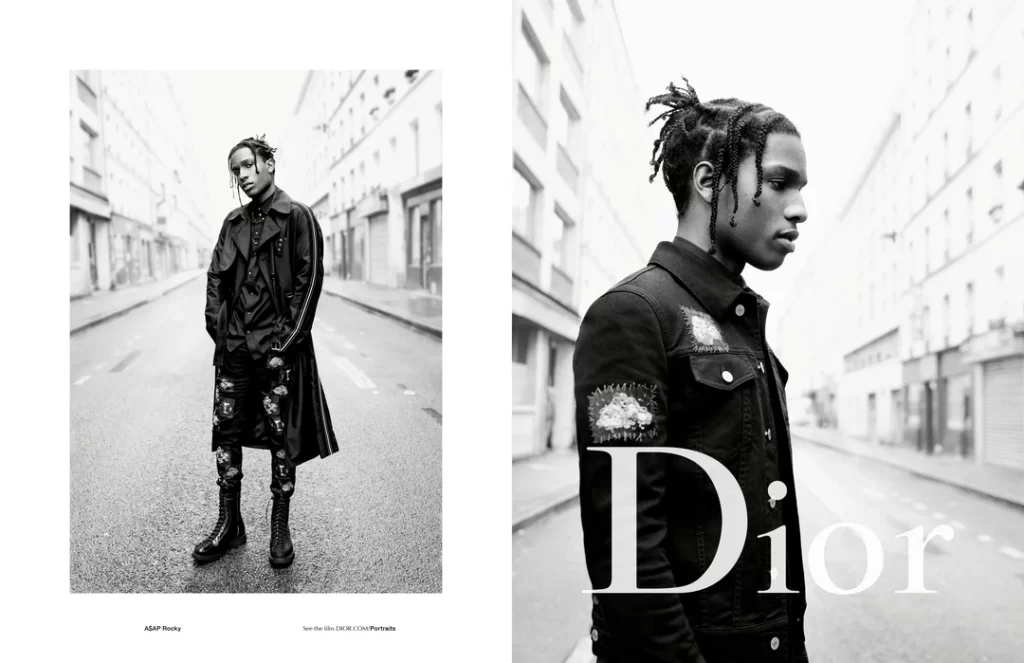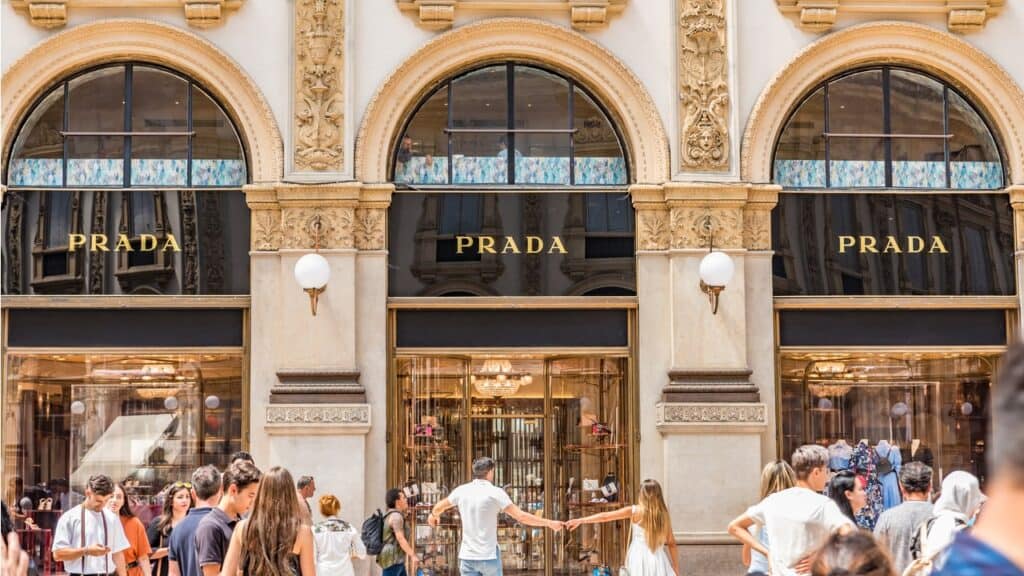Fashion Marketing: Understanding Consumer Behaviour
Today we're getting up close and personal with a topic that merges glamour with grit, creativity with commerce, style with strategy. Yes, you guessed it—we're talking about “Fashion Marketing: Understanding Consumer Behaviour”.
We're all no strangers to the thrill of unboxing a newly-arrived designer piece or the satisfaction of snagging that trendy item on a killer sale. But ever wondered what exactly influenced your decision to click ‘add to cart'? Or why that particular Instagram ad made you stop scrolling, or that in-store display caught your eye? That's precisely what we're exploring today.
In the fast-paced, cut-throat fashion world, understanding consumer behaviour is like having a secret map of a hidden treasure. It's the key to crafting strategies that don't just sell clothes but sell stories, lifestyles, and dreams. Whether you're a seasoned fashion marketer, a brand owner or just a curious fashion enthusiast, we invite you to join us on this journey. We'll navigate the complex maze of fashion consumer psychology, unlock the secrets of effective fashion marketing, and unveil the strategies that turn window shoppers into loyal customers.
So buckle up, folks! It's time to strut down the runway of fashion marketing insights and peek into the fascinating world of consumer behaviour. Let's decode the science behind the style together!
Table of Contents
Section 1: Understanding the Fashion Market

If you want to shine in the world of fashion marketing, it's crucial to have a solid grasp of the fashion market and, of course, the people who make up your target audience. Trust me; it's a game-changer. So, in this section, let's dive deep into the incredible significance of market research and discover how it can propel fashion brands to conquer the competition.
Imagine this: You're a fashion brand eager to make your mark in the industry. You've got stunning designs, innovative ideas, and a burning passion for fashion. But hold on a moment, my friend. How will you know if your ideas resonate with your audience? How will you identify the trends about taking the fashion world by storm? Here's where market research steps in to save the day.
Market research, my dear fashion enthusiast, is the compass that guides you towards success. It helps you navigate the ever-changing fashion industry by providing invaluable insights into consumer preferences, behaviours, and desires. It's like having your finger on the pulse of the fashion world, always ready to adapt and deliver what your audience craves.
By delving into market research, you unlock a treasure trove of knowledge about your target audience. You get to understand their needs, aspirations, and pain points. It's like having a heartfelt conversation with them, except in this case, the exchange happens through data, surveys, focus groups, and interviews.
This wealth of information gives you a competitive edge that sets you apart from the crowd. You'll be able to identify gaps in the market and tailor your offerings to meet unmet needs. Whether launching a new collection or creating captivating marketing campaigns, market research empowers you to make informed decisions that resonate with your audience on a deep level.
Picture this: You're a fashion brand specialising in sustainable and ethically sourced clothing. Through market research, you discover that your target audience is becoming increasingly environmentally conscious and actively seeks out brands that align with their values. Armed with this knowledge, you can position your brand as a leader in sustainability, crafting compelling marketing messages that strike a chord with your audience. Suddenly, you're not just another fashion brand but a movement, a force for positive change in the industry.
But hold on. Market research isn't a one-time affair. The fashion industry is like a chameleon, constantly evolving and shifting. That's why it's crucial always to keep your finger on the market's pulse. Stay up-to-date with the latest trends, consumer insights, and emerging technologies. Adaptability is critical, and by consistently conducting market research, you ensure that your fashion brand remains at the forefront of the industry.
1.1 The Role of Market Research
Market research serves as the foundation for effective fashion marketing strategies. It helps brands identify their target audience, understand consumer preferences, and stay ahead of industry trends. By conducting thorough market research, fashion brands can gather valuable insights to guide their decision-making processes and create products that resonate with consumers.
1.2 Identifying Target Audience
Knowing your target audience is crucial for fashion brands to tailor their marketing efforts effectively. By defining key demographics and psychographics, brands can create targeted campaigns that speak directly to the desires and aspirations of their ideal customers. This section will guide you in identifying and defining target audience segments in the fashion industry.
Section 2: Crafting a Strong Brand Identity

Regarding fashion, having a solid brand identity is like having a distinctive voice that speaks directly to your target audience. It's the essence of who you are as a fashion brand and sets you apart from the competition.
Brand positioning is a vital aspect of establishing your brand identity. It involves determining how you want your brand to be perceived in the minds of consumers. Think of it as finding your unique spot in the vast fashion landscape. Are you the high-end luxury brand that exudes elegance and sophistication? Or are you the trendy and affordable brand that caters to fast-paced fashionistas? Defining your brand's position helps you carve out a niche and connect with the right audience.
You must embark on a self-discovery journey to develop a brand identity that truly resonates with consumers. Start by understanding your brand's values, mission, and vision. What drives your brand? What do you stand for? This reflective process helps you uncover the essence of your brand and what makes it unique.
Once you clearly understand your brand's identity, it's time to bring it to life visually. Visual elements like logos, colour schemes, and typography create a memorable brand identity. Each piece should be carefully chosen to reflect your brand's personality and resonate with your target audience; whether a sleek and minimalist logo or a bold and vibrant colour palette, the visual components should communicate your brand's story and evoke the desired emotions.
Consistency is critical in building a solid brand identity. Ensure that your brand's personality and visual elements are consistently applied across all touchpoints, from your website and social media channels to your product packaging and advertising campaigns. This consistency helps reinforce your brand's identity and makes it recognisable and memorable in the minds of consumers.
Another critical aspect of developing a unique brand identity is understanding your target audience. Who are they? What are their preferences, desires, and aspirations? By deeply understanding your audience, you can tailor your brand's messaging and communication style to resonate with them effectively. This personal connection fosters brand loyalty and encourages consumers to become advocates for your fashion brand.
2.1 Brand Positioning
Brand positioning involves defining a unique place for your fashion brand in the market. It's about differentiating yourself from competitors and creating a compelling value proposition for your target audience. We'll discuss the critical elements of brand positioning and provide practical tips on establishing a distinct position in the fashion industry.
2.2 Developing a Compelling Brand Identity
A strong brand identity is the essence of your fashion brand. It encompasses your brand's personality, values, and visual elements. This section will explore developing a compelling brand identity, including logo design, colour schemes, typography, and other visual elements that communicate your brand's story and appeal to your target audience.
Section 3: Fashion Advertising and Promotion

In this section, we'll explore a range of strategies and channels that can help skyrocket your fashion brand to success.
When it comes to advertising, there are countless strategies you can employ to make a lasting impression on your target audience. One popular approach is to create visually stunning and emotionally captivating campaigns. Think about those fashion ads that leave you feeling inspired and longing to be part of that glamorous world. By crafting visually appealing content and tapping into your audience's emotions, you can make a memorable impact that resonates with potential customers.
Another effective advertising strategy is to leverage the power of influencers. In today's social media-driven landscape, influencers have become a driving force in the fashion industry. Collaborating with influencers who align with your brand's values and aesthetic can help you reach a wider audience and gain credibility. Their authentic endorsements and recommendations can significantly influence consumer purchasing decisions.
But advertising is just one piece of the puzzle. Promotion plays a vital role in building brand awareness and driving sales. One popular promotional channel is social media platforms like Instagram, Facebook, and TikTok. These platforms offer a unique opportunity to showcase your brand's personality, engage with your audience, and spark conversations. You can forge a strong connection with your followers through captivating visuals, creative storytelling, and interactive content and cultivate a loyal community of brand advocates.
Remember to appreciate the power of collaborations and partnerships in the fashion industry. Joining complementary brands or influential individuals can amplify your reach and generate buzz. Co-created collections, limited editions, or even cross-promotions can help you tap into new markets and attract the attention of new audiences. Collaborations also bring an element of novelty and excitement, creating a sense of exclusivity and desirability around your brand.
Traditional advertising and promotion methods still hold their ground, too. Print media, such as fashion magazines or billboards, can effectively reach specific demographics and create a sense of prestige. Events like fashion shows, pop-up shops, or brand activations allow you to engage directly with your target audience, allowing them to experience your brand in a tangible and immersive way.
Of course, staying current with emerging trends and technological advancements in advertising and promotion is essential. As new platforms and techniques emerge, be open to experimenting and embracing innovative approaches. Virtual reality experiences, interactive online campaigns, or even utilising augmented reality filters can add a touch of excitement and novelty to your brand's promotional efforts.
3.1 Print Advertising and Editorials
Although digital advertising dominates the modern marketing landscape, print advertising and editorials still hold significant value in the fashion industry. We'll discuss the power of fashion magazines, editorial features, and collaborations with influential publications in enhancing brand visibility and credibility.
3.2 Digital Advertising and Content Marketing
Digital advertising and content marketing have revolutionised how fashion brands reach and engage with their target audience. We'll explore strategies such as search engine marketing (SEM), social media advertising, and content creation that can amplify your brand's online presence and drive meaningful customer interactions.
3.3 Influencer Collaborations
Influencer marketing has become a powerful tool in the fashion industry, as social media influencers sway consumer purchasing decisions. In this section, we'll delve into influencer collaborations and how fashion brands can leverage these partnerships to expand their reach and build trust with their target audience.
Influencers can create authentic and relatable content that resonates with their followers. By collaborating with influencers whose values align with your brand, you can tap into their engaged audience and generate buzz around your products or collections. Whether it's through sponsored posts, product reviews, or ambassador programs, influencer collaborations can significantly impact brand awareness and drive sales.
To maximise the effectiveness of influencer collaborations, it's essential to select influencers whose audience aligns with your target market carefully. Look for influencers whose style and values align with your brand's image, and ensure they have an engaged and active following. Additionally, establish clear objectives and expectations for the collaboration to ensure that both parties are aligned on the goals and deliverables.
Section 4: Harnessing the Power of Social Media

Nowadays, it's necessary to recognise social media's profound impact on the fashion industry. It's like a catwalk on the internet, where brands can strut their stuff, connect with their audience, flaunt their products, and create a dedicated community of fashion enthusiasts. In this section, we will dive into the exciting realm of social media platforms and the clever strategies that fashion brands can employ to boost their presence and foster genuine engagement.
First, let's peek at the plethora of social media platforms that have become the runway for fashion marketers. With its visually beautiful interface, Instagram is the go-to platform for fashion brands. It's a digital runway where designers and influencers can showcase their latest collections, share stunning visuals, and inspire followers with trendy looks. From behind-the-scenes glimpses of fashion shows to drool-worthy product shots, Instagram offers a picture-perfect stage for brands to shine.
But let's remember Twitter! This fast-paced platform may limit your characters but is a hot spot for real-time conversations and instant engagement. Fashion brands can join the buzz surrounding fashion events, share breaking news, and even provide quick style tips. With the right blend of wit and charm, brands can create a personality that resonates with their audience and keeps them hooked.
Next up, we have Facebook, the granddaddy of social media platforms. It's where fashion brands can build a robust community, foster meaningful conversations, and cultivate brand loyalty. By sharing compelling stories, hosting live events, and creating engaging content, brands can transform their Facebook pages into a virtual fashion haven where fans can connect, interact, and feel like part of an exclusive club.
And, of course, we can't leave out Pinterest! This visual discovery platform is a treasure trove for fashion inspiration. With a focus on stunning imagery, fashion brands can create eye-catching boards, curate style guides, and captivate the attention of style-savvy Pinners. From runway looks to DIY fashion hacks, Pinterest allows brands to tap into the desires and aspirations of their audience, making it a goldmine for driving traffic and boosting brand visibility.
Now that we've explored the diverse social media platforms let's talk strategies! Fashion brands can employ several techniques to elevate their social media game. First and foremost, it's all about creating visually stunning and cohesive content that embodies the brand's unique aesthetic. Whether showcasing behind-the-scenes glimpses of fashion shoots, collaborating with influencers to feature their products, or even running creative contests, brands need to curate an irresistible feed that makes their audience want to hit that “follow” button.
Another powerful strategy is to engage with the audience authentically. Responding to comments, addressing concerns, and initiating conversations are vital for building trust and fostering community. By interacting with followers and making them feel heard, brands can turn casual admirers into devoted fans who will support the brand and become brand ambassadors.
Finally, let's remember the power of storytelling. Fashion is more than clothes; it's about self-expression, emotions, and experiences. By weaving captivating narratives through social media posts, brands can connect emotionally with their audience. Sharing the inspiration behind a collection, highlighting the craftsmanship involved, or even showcasing the positive impact of sustainable practices can make the audience feel part of something bigger, creating a loyal following that stands by the brand's values.
4.1 Choosing the Right Social Media Platforms
With numerous social media platforms available, selecting the ones that align with your target audience and brand image is crucial. Each platform offers unique features and caters to different demographics. For example, Instagram is highly visual and popular among fashion enthusiasts, while TikTok appeals to a younger audience with its short-form videos. By understanding your target audience's preferences and behaviours, you can focus your efforts on the platforms that will yield the best results for your fashion brand.
4.2 Creating Engaging Content
Content is king in the realm of social media. Creating compelling and shareable content is crucial to capture your audience's attention and stand out. This can include visually stunning images, behind-the-scenes glimpses, user-generated content, and engaging captions that tell your brand's story. By consistently delivering high-quality content that aligns with your brand identity, you can cultivate a loyal following and establish your fashion brand as an authority in the industry.
4.3 Building a Community and Fostering Engagement
Social media is not just about broadcasting your brand's message; it's about building a community and fostering genuine connections with your audience. Encourage user-generated content by running contests or challenges, responding to comments and direct messages promptly, and creating opportunities for your followers to engage with your brand. You can cultivate brand loyalty and advocacy by fostering a sense of belonging and actively listening to your audience.
Section 5: Enhancing Customer Engagement

In the fashion industry, customer engagement is more than just a series of transactions. It's all about creating unforgettable experiences and building strong, lasting customer relationships. In this section, we'll delve into various strategies that can help you elevate customer engagement and foster unwavering brand loyalty.
Imagine stepping into a high-end boutique, where you're greeted with a warm smile and offered a refreshing beverage to enjoy while you browse. As you explore the store, you notice that the staff is knowledgeable and passionate about the latest fashion trends, eagerly offering styling advice tailored to your taste. This personalised attention makes you feel valued and understood, turning a simple shopping trip into a memorable experience.
This scenario perfectly shows how fashion brands can go beyond the conventional transactional approach to engage customers. You can leave a lasting impression on your clientele by creating a welcoming atmosphere and providing personalised services. It's about going that extra mile to exceed their expectations, making them feel part of a unique community.
One effective strategy for enhancing customer engagement is leveraging technology. In today's digital age, social media platforms offer an excellent opportunity to connect with your customers more personally. By regularly sharing captivating content, such as behind-the-scenes glimpses of your design process or showcasing your products creatively, you can captivate your audience and keep them engaged with your brand.
Moreover, social media allows for direct and real-time interaction with your customers. Responding to their comments, messages, and inquiries promptly demonstrates your dedication to their satisfaction. This conversational approach builds trust and fosters a sense of loyalty, as customers feel heard and valued.
Another strategy is to organise exclusive events or collaborations that provide unique experiences for your customers. Consider hosting a fashion or trunk show where customers can get a first-hand look at your latest collection. Inviting fashion influencers or celebrities to attend can further generate excitement and buzz around your brand. By offering these special events, you create a sense of exclusivity and allow your customers to engage with your brand in a more immersive and memorable way.
A loyalty program can also significantly enhance customer engagement and foster brand loyalty. Reward your customers for their continued support and engagement by offering exclusive discounts, early access to new collections, or personalised styling sessions. These perks make customers feel appreciated and encourage them to return, solidifying their loyalty to your brand.
5.1 Personalisations and Customisations
Personalisation is a powerful tool in fashion marketing. By tailoring your products or experiences to individual customer preferences, you can create a sense of exclusivity and make customers feel valued. This includes personalised recommendations, customised packaging, or even made-to-order options. Understanding your customer's needs and preferences allows you to create a personalised experience that sets your brand apart from the competition.
5.2 Seamless Omnichannel Experience
In today's digital age, customers expect a seamless experience across multiple channels, whether browsing your website, visiting your physical store, or interacting with your social media accounts. An omnichannel approach ensures your brand maintains a consistent presence and delivers a cohesive experience across all touchpoints. By integrating technologies and data-driven insights, you can provide a seamless shopping experience, allowing customers to transition effortlessly between online and offline channels.
Investing in augmented reality (AR) and virtual reality (VR) can also enhance customer engagement by offering immersive and interactive experiences. For example, allowing customers to virtually try on clothes or visualise how furniture will look in their homes can increase confidence in their purchase decisions.
5.3 Building Loyalty Programs
Loyalty programs are an effective way to reward and incentivise repeat customers. You can encourage customer loyalty and repeat purchases by offering exclusive perks, discounts, or early access to new collections. Implementing a robust customer relationship management (CRM), system allows you to track customer behaviour and preferences, personalise your loyalty program, and tailor rewards to individual customers.
Moreover, loyalty programs provide valuable data and insights for marketing strategies. You can identify trends and opportunities to engage and delight your loyal customers by analysing purchase patterns and preferences.
5.4 Providing Exceptional Customer Service
In the fashion industry, exceptional customer service is a key differentiator. Whether through prompt responses to inquiries, hassle-free return policies, or personalised styling advice, providing excellent customer service creates a positive brand experience and builds customer trust. Investing in well-trained customer service representatives and implementing tools such as live chat or chatbots can streamline the customer service process and ensure customers feel supported throughout their journey.
Conclusion
In the fast-paced and competitive world of fashion, effective marketing strategies are paramount to the success of fashion brands. By understanding the fashion market, crafting a solid brand identity, utilising advertising and promotional channels, harnessing the power of social media, and enhancing customer engagement, fashion brands can confidently navigate the industry landscape and unlock their full potential.
Remember, fashion marketing is not a one-size-fits-all approach. It requires continuous adaptation, innovation, and a deep understanding of your target audience. By staying attuned to industry trends and consumer preferences, you can create meaningful connections, foster brand loyalty, and drive growth and success in the dynamic fashion world.
So, embrace the power of fashion marketing, and make your brand shine in the hearts and closets of fashion enthusiasts worldwide.
